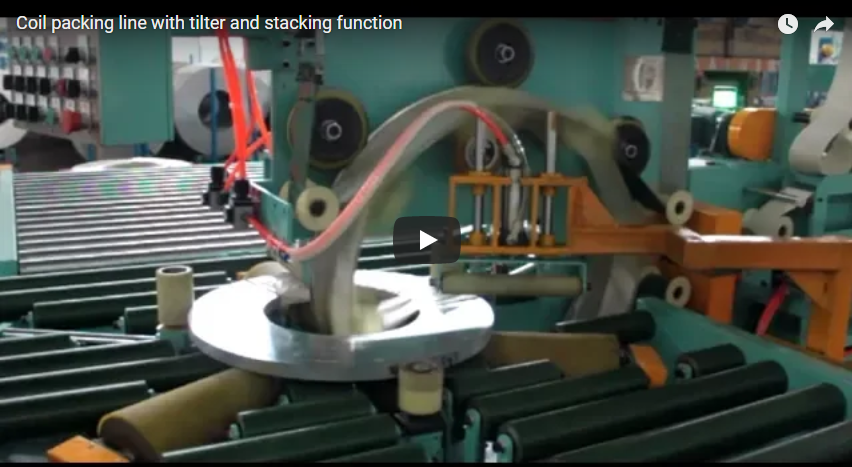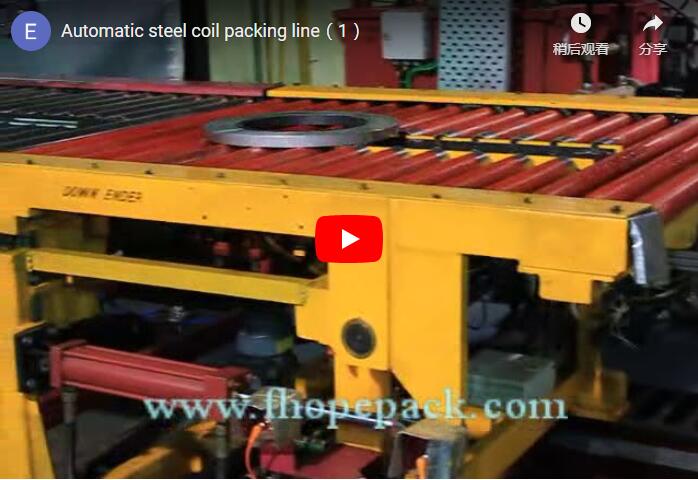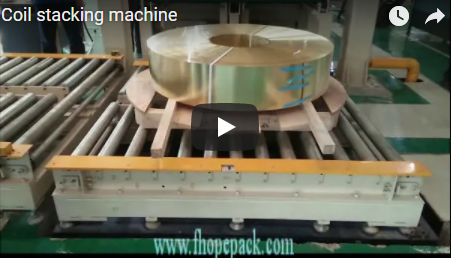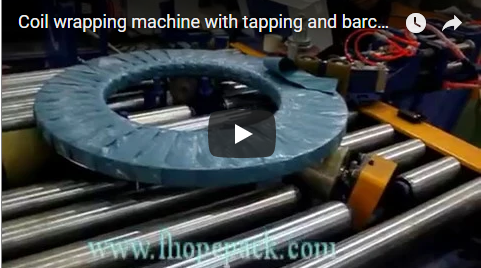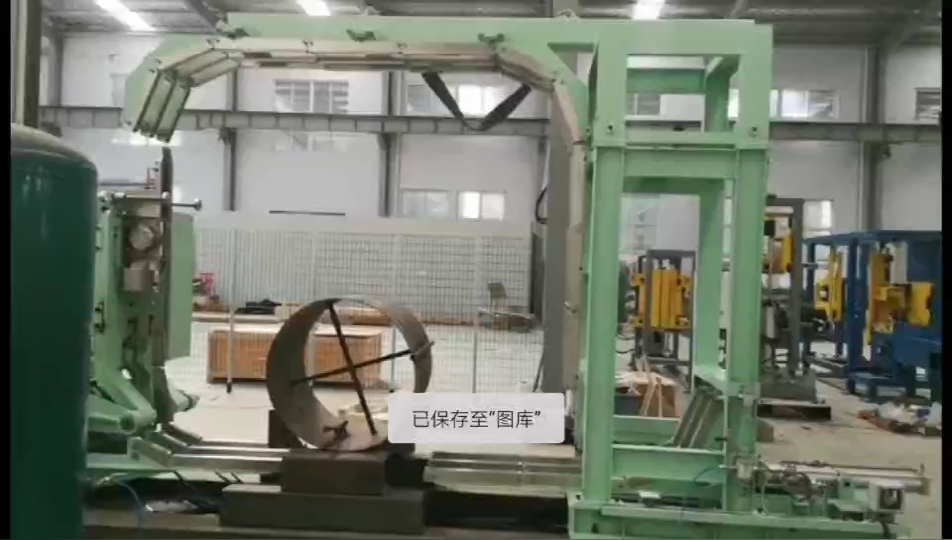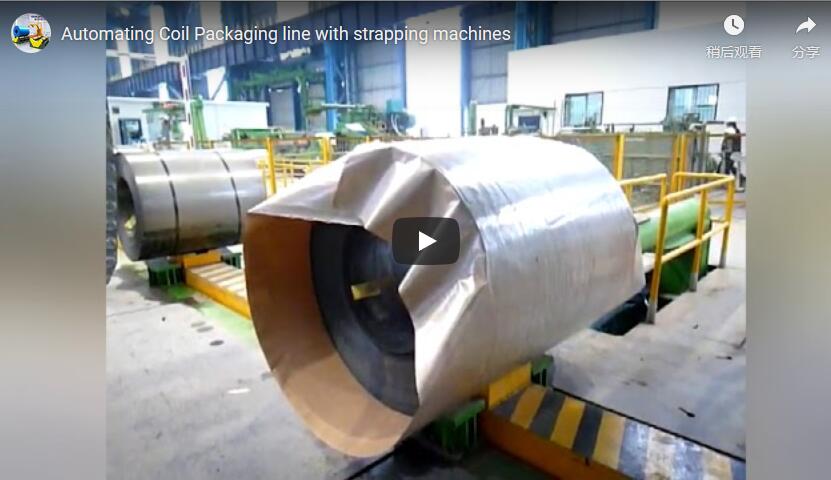Enhancing Metal Coil Logistics: Commissioning and Operation of an Advanced Automatic Steel Coil Packaging Line
The secure and efficient packaging of metal coils—whether stainless steel, copper, aluminum, or other alloys—is a critical final step in production, directly impacting product integrity during transit and storage, and influencing overall operational costs. Manual or semi-automated processes often present challenges related to consistency, throughput speed, labor intensity, and potential safety hazards. Addressing these challenges requires sophisticated automation, as demonstrated by the commissioning of the advanced Automatic Steel Coil Packing Line showcased in the video above.
Integrating Key Technologies for Optimal Performance
This automated system integrates several key technologies, drawing inspiration from established engineering principles and patented designs found across the industry (referencing concepts seen in patents like USPTO 9,XXX,XXX for automated strapping mechanisms or similar innovations), to deliver a seamless packaging workflow:
- Coil Upending/Downending: The process typically begins with a coil downender (or tilter). This essential component safely and gently receives coils—often eye-to-sky from a turnstile or crane—and reorients them to an eye-to-the-horizontal position for packaging. This automated handling minimizes the risk of edge damage or deformation, crucial for maintaining material quality as highlighted in numerous metal processing studies.
- Precision PET Strapping: Replacing traditional steel banding in many applications, Polyethylene Terephthalate (PET) strapping offers high tensile strength, excellent elongation recovery (maintaining tension even if the coil settles), corrosion resistance, and improved operator safety. The automated strapping station applies circumferential straps with consistent, pre-set tension and utilizes reliable sealing methods (e.g., friction-welding) for secure closure, ensuring package stability according to transport securement best practices.
- Protective Coil Wrapping: Depending on requirements, coils may proceed to a coil wrapping machine. This station applies layers of stretch film, VCI (Volatile Corrosion Inhibitor) paper, or other protective materials. This shields the metal surface from environmental factors like moisture, dust, and contaminants, vital for sensitive materials like stainless steel or copper strip. Research published in materials science journals often emphasizes the importance of barrier packaging in preventing surface degradation.
- Quality Verification: Integrated coil checking stations can incorporate sensors or vision systems for quality assurance. This may include verifying coil dimensions, checking strap placement and integrity, or reading identification labels, aligning with Industry 4.0 principles for traceability and quality control.
- Automated Stacking and Offloading: Post-packaging, coils are often transferred to a stacking unit. This system arranges packaged coils safely and efficiently onto pallets or designated floor areas, optimizing warehouse space and preparing them for shipment.
Rigorous Commissioning: Ensuring Reliability Under Load
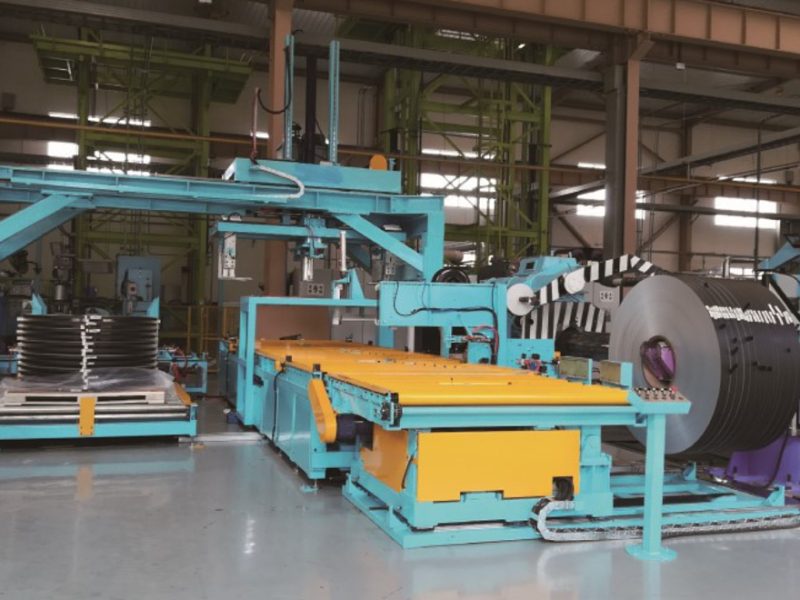
As seen in the commissioning video, rigorous testing is paramount before deploying such automated systems into full production. The documented 12-hour non-stop operational test simulates real-world demands, allowing engineers to:
- Validate System Endurance: Confirming that all mechanical and electrical components can withstand continuous operation.
- Optimize Control Logic: Fine-tuning the PLC programming and sensor feedback loops for maximum efficiency and smooth transitions between stations.
- Identify and Resolve Bottlenecks: Detecting any potential issues related to cycle times, material feeding, or component synchronization under sustained load.
- Troubleshoot in Real-Time: Addressing minor glitches or making parameter adjustments to ensure flawless performance.
This comprehensive commissioning process ensures the Automatic Steel Coil Packing Line meets stringent performance benchmarks for reliability and output from day one.
Tangible Benefits for Metal Fabricators and Processors
Implementing a fully automated coil packaging line delivers significant operational advantages, widely reported in trade publications like The Fabricator and Modern Metals:
- Increased Throughput: Dramatically reduces packaging cycle times compared to manual methods.
- Enhanced Package Integrity: Consistent wrapping and strapping minimize the risk of coil damage during handling and shipping, reducing costly rejects or claims.
- Improved Workplace Safety: Eliminates strenuous manual handling and strapping tasks, significantly reducing ergonomic risks and potential injuries.
- Labor Optimization: Frees skilled workers from repetitive packaging tasks, allowing them to focus on value-added production activities.
- Reduced Material Waste: Optimized application of strapping and wrapping materials contributes to cost savings and sustainability efforts.
- Operational Control & Data: Integration capabilities allow for better monitoring, control, and data logging of the packaging process.
Conclusion
The move towards automated coil packaging systems represents a strategic investment for metal service centers, rolling mills, and large-scale fabricators aiming to enhance efficiency, safety, and product quality. The successful commissioning and operation of lines like the one featured demonstrate the maturity and reliability of modern industrial automation in addressing the specific demands of metal coil logistics.
For further technical specifications, customization options, or to discuss how such a system could be integrated into your specific operations, please reach out to the expert team at info@fhopepack.com. They can provide detailed information tailored to your unique coil processing and packaging requirements.

